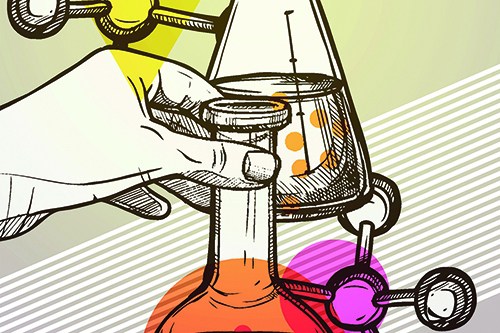
Consumers demand a certain quality and eating experience from processed foods. This is achieved, in part, by the addition of stabilizers, thickeners and gelling agents, which give foods consistent texture, taste and mouth feel.
Definition
Extracted primarily from natural substances, stabilizers, thickeners and gelling agents are approved direct additives incorporated into foods to provide structure, viscosity, stability and other qualities, such as maintaining existing color.
Functions, Names and Labeling
Thickeners, stabilizers and gelling agents are classified separately but overlap in functionality. When dissolved or added to foods, they create stiffness, stabilize emulsions or form gels.
Thickeners range from flavorless powders to gums and are chosen for their ability to work in a variety of chemical and physical conditions. Variables affecting choice of thickener include pH, frozen state, clarity and taste. Starches, pectin and gums are the most common commercial thickeners used in soups, sauces and puddings.
Stabilizers are substances that increase stability and thickness by helping foods remain in an emulsion and retain physical characteristics. Ingredients that normally do not mix, such as oil and water, need stabilizers. Many low-fat foods are dependent on stabilizers. Lecithin, agar-agar, carrageenan and pectin are common in ice cream, margarine, dairy products, salad dressings and mayonnaise.
Gelling agents also function as stabilizers and thickeners to provide thickening without stiffness through the formation of gel in jellies, jams, desserts, yogurts and candies. Gums, starches, pectin, agar-agar and gelatin are common gelling agents.
Home cooking achieves the same structural changes with the addition of familiar starches, grains, egg yolks, yogurt, gelatin, mustard and vegetable purees.
Thickening agents also are used in treating medical conditions, such as dysphagia, to make swallowing easier and reduce the risk of aspiration.
To help consumers understand the function of the food additive, a classification is indicated on food labels — for example, “pectin (gelling agent).” Most direct additives are identified on the ingredient label of foods.
Thickeners, stabilizers and gelling agents are largely polysaccharides or derived from protein sources, for example:
Polysaccharides
- Starches: arrowroot, cornstarch, potato starch, sago, tapioca
- Vegetable gums: guar gum (extracted from guar bean), xanthan gum (from microbial fermentation used in gluten-free baked goods), locust bean gum (from carob tree)
- Pectin (from apples or citrus fruit)
Protein
- Collagen, egg whites, gelatin (from animal collagen), whey
Others
- Sugars: agar (from algae), carrageenan (from seaweeds and used to prevent separation in dairy products and ice cream)
- Sodium pyrophosphate (used in common foods such as canned fish and instant pudding)
- Lecithin (found in egg yolk, legumes and corn)
- Mono- and diglycerides (stabilizers naturally present in many seed oils)
Sources are primarily natural (arrowroot, gelatin, starches) but also can be synthetic (carboxymethyl cellulose, methyl cellulose).
Oversight
Thickeners, stabilizers and gelling agents must be authorized by the Food and Drug Administration before use. Standards for food additives are clearly defined with strict criteria, and there must be a documented need for their use before approval is granted. Maximum usage levels vary depending on the additive and the food in which it is used.
For example, stabilizers in frozen dairy desserts, fruit and water ices and in confections and frostings cannot exceed 0.5 percent by weight of the final product. Emulsifier, flavoring adjuvant, stabilizer or thickener in baked goods have the same 0.5 percent by weight limit.
Safety
Today, food additives are scrutinized, regulated and monitored more closely than at any other time. All new food additives undergo a rigorous testing and safety assessment to minimize potential adverse effects to human health. However, side effects and nutrient-drug interactions may result from large doses. For example, consuming more than 15 grams of xanthan gum may cause nausea, flatulence and bloating. Food-drug interactions are possible with certain medications; carrageenan may cause adverse side effects in people taking anticoagulants and antihypertensive drugs, and pectin may interact with antibiotics and cholesterol-lowering drugs.
Final Thought
Registered dietitian nutritionists can help consumers feel more comfortable about food additives by communicating their similar role in home kitchens.
“While the name of the ingredient may be unfamiliar, the mode of action in the food matrix is similar,” says Heather Dover, RDN, research assistant at the Center for Research on Ingredient Safety at Michigan State University.
“Most concerns about food additives are related to synthetic ingredients added to foods, yet 99 percent of these additives are derived from natural sources and meet all of the FDA standards for safety, intended use and populations,” says Roger Clemens, DrPH, and former president of the Institute of Food Technologists. “For over 100 years of usage, these direct additives have posed no adverse effect for any population.”



